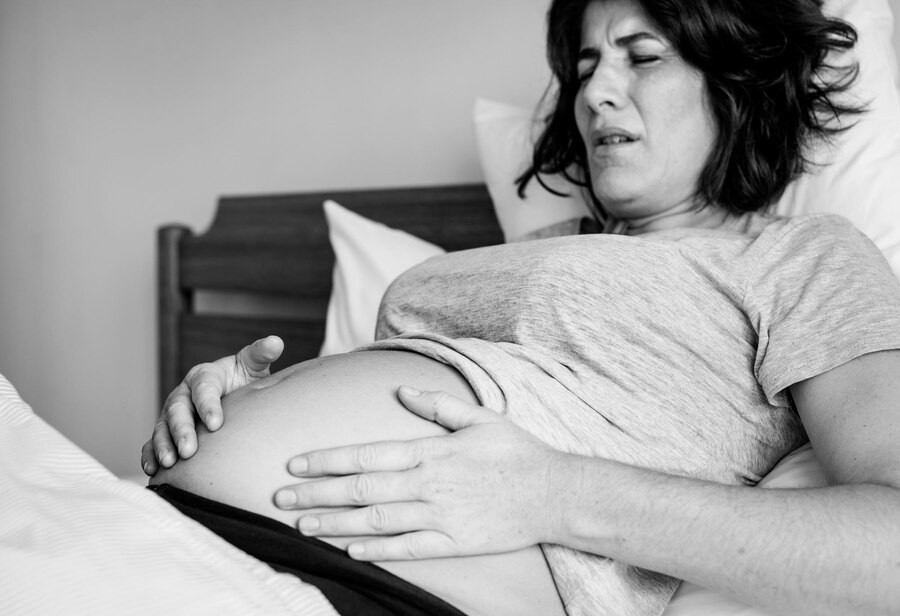The maternal mortality rate (MMR) in Indonesia as of January 2023 is still quite high, at around 305 cases per 100,000 live births. The maternal mortality rate in Indonesia is calculated when a pregnant woman dies due to something related to pregnancy or childbirth, or within the 42-day period after the end of pregnancy or after giving birth.
Causes of maternal mortality
There are several factors that contribute to maternal deaths during pregnancy or childbirth, including:
- Postpartum hemorrhage (PPH)
PPH is a condition that can occur when a pregnant woman, during childbirth, experiences excessive bleeding. Excessive blood loss after childbirth becomes a serious situation and poses a significant risk to the mother's life.
Postpartum hemorrhage requires treatment and care, and possibly surgery if necessary. In emergency situations, you may also need a blood transfusion as part of the treatment.
- High blood pressure and eclampsia
High blood pressure and eclampsia are serious conditions that can cause maternal death during pregnancy, childbirth, or postpartum. Eclampsia itself is a pregnancy complication that occurs after 20 weeks of pregnancy and is characterized by severe high blood pressure.
Other symptoms, including seizures, altered consciousness, severe headaches, and problems in various organs of the body, can accompany eclampsia. This condition is a medical emergency, and it needs immediate assistance at the hospital to receive medication that controls blood pressure and other necessary interventions.
Untreated or not promptly managed eclampsia can result in serious complications such as organ damage, bleeding, and, in the worst-case scenario, maternal death.
- Pregnancy sepsis
Pregnant women may experience infections during pregnancy, such as urinary tract infections, uterine infections, and others. These infections can develop into sepsis, where the body responds to the infection with a severe systemic inflammatory reaction.
Sepsis can cause organ dysfunction, low blood pressure, blood clotting disorders, behavioral changes, altered consciousness, and even death. Therefore, it is crucial to prevent infections during pregnancy.
- Pulmonary embolism
Pulmonary embolism is a medical condition characterized by blockage of the pulmonary arteries with blood clots. Pulmonary embolism is rarely seen in pregnancy. However, if this condition occurs during pregnancy, it has serious consequences, including pregnancy and postpartum death.
Blood clots form in other parts of the body, such as the leg or pelvic blood vessels travel to the lungs, causing pulmonary embolism. Pregnant women who spend long periods of time lying on their backs are at greater risk of developing pulmonary embolisms.
Other complications during pregnancy, such as placenta previa, uterine rupture, or ectopic pregnancy, can increase the risk of death for women. Maintaining pregnancy health is critical to minimizing the risk of maternal death or postpartum complications.
How can we prevent maternal death?
Reducing the maternal mortality rate is a global health priority, including for the Indonesian government. There are many steps that can be taken to reduce MMR and prevent maternal deaths, including:
- Providing balanced nutrition during pregnancy, including a balanced diet, necessary supplements, and avoiding high-risk foods
- Managing chronic diseases effectively
- Regularly visiting doctors according to the recommended schedule
- Preventing infections with preventive measures such as vaccination and maintaining hand hygiene
- adhering to cough and sneeze etiquette
- Receiving treatment for pregnancy complications
- Increasing awareness of maternal health and pregnancy education
- Accessing good pregnancy healthcare services
If you need medical advice or consultation, you can either visit a doctor or make use of the consultation features that are available in the Ai Care application by downloading the Ai Care application from the App Store or Play Store.
Looking for more information about pregnancy, breastfeeding, and the health of women and children? Click here!
- dr. Monica Salim
Donna Murray, RN, BSN (2022). Maternal Mortality Rate, Causes, and Prevention. Available from: https://www.verywellfamily.com/maternal-mortality-rate-causes-and-prevention-4163653
dr. Siti Nadia Tarmizi, M.Epid (2023). Turunkan Angka Kematian Ibu melalui Deteksi Dini dengan Pemenuhan USG di Puskesmas. Available from: https://sehatnegeriku.kemkes.go.id/baca/rilis-media/20230115/4842206/turunkan-angka-kematian-ibu-melalui-deteksi-dini-dengan-pemenuhan-usg-di-puskesmas/
March of Dimes (2020). Postpartum hemorrhage. Available from: https://www.marchofdimes.org/find-support/topics/postpartum/postpartum-hemorrhage
The American College of Obstetricians and Gynecologists (2023). Preeclampsia and High Blood Pressure During Pregnancy. Available from: https://www.acog.org/womens-health/faqs/preeclampsia-and-high-blood-pressure-during-pregnancy
Cleveland Clinic (2022). Eclampsia. Available from: https://my.clevelandclinic.org/health/diseases/24333-eclampsia
WHO: Maternal sepsis. Available from: https://www.who.int/teams/sexual-and-reproductive-health-and-research-(srh)/areas-of-work/maternal-and-perinatal-health/maternal-sepsis
United Lincolnshire Hospitals NHS Trust (2023). Sepsis: understanding serious infection in pregnancy and after birth. Available from: https://www.ulh.nhs.uk/services/maternity-services/maternity-services-information/sepsis-understanding-serious-infection-in-pregnancy-and-after-birth
Robyn Horsager-Boehrer, MD (2021). Pulmonary embolism in pregnancy: Know the symptoms and risks of blood clots. Available from: https://utswmed.org/medblog/pulmonary-embolism-pregnancy/











